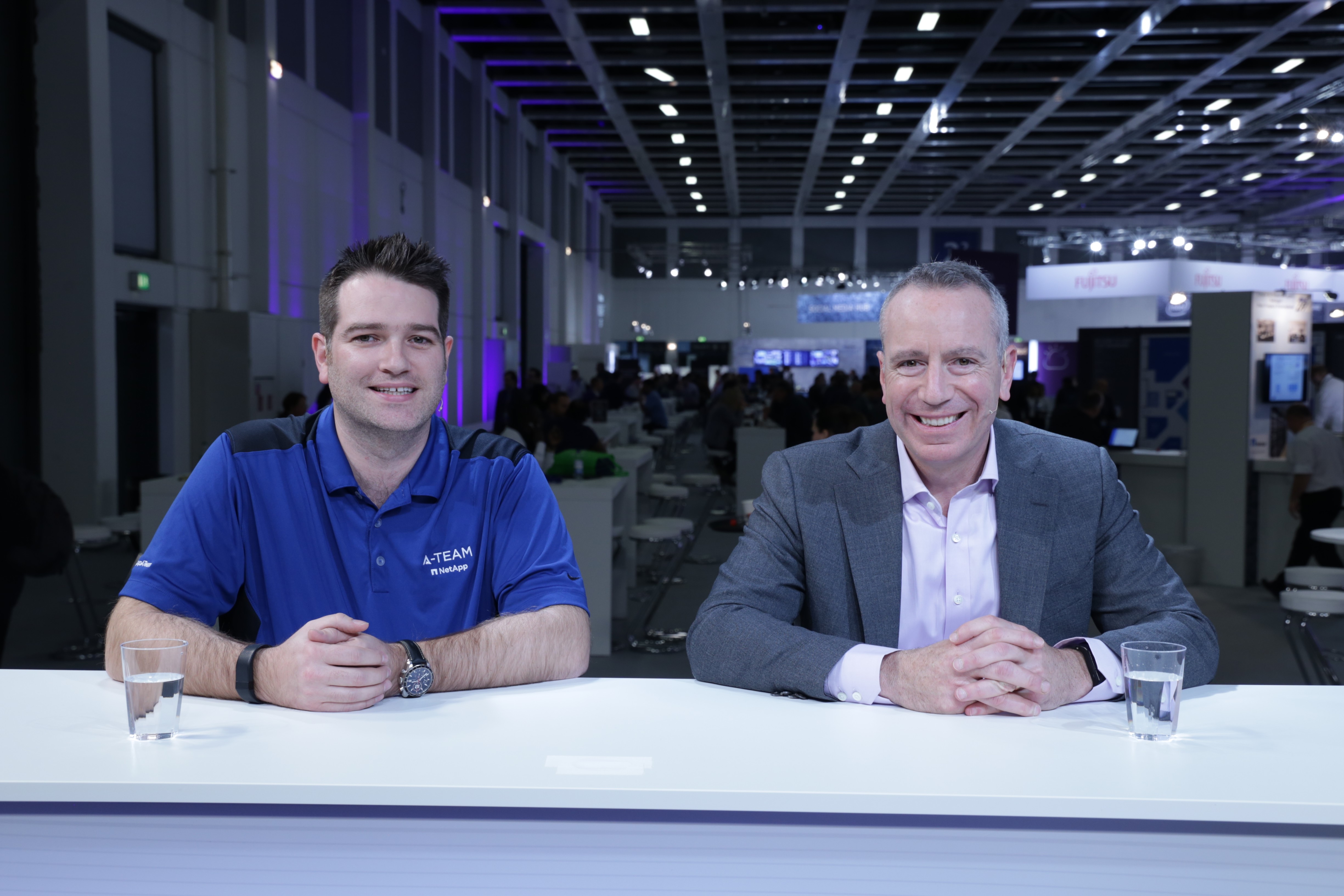 BIG DATA
BIG DATA
 BIG DATA
BIG DATA
 BIG DATA
BIG DATA
Hyperconverged infrastructure’s core value lies in its ability to simplify data centers, facilitating rapid implementations and enabling customers to spend more time analyzing and strategizing with their data.
“[HCI] takes what would normally be hours and hours to implement a solution … and it simplifies it down to … an installation that will be done within 45 minutes,” said Brian McCloskey (pictured, right), vice president of hyperconverged infrastructure go-to-market at NetApp Inc., a solutions provider enabling consolidated storage and faster transport of data at the enterprise level.
McCloskey and Ruairí McBride (pictured, left), technical account manager, enterprise computing solutions, at Arrow Electronics Inc., spoke with Rebecca Knight (@knightrm) and Peter Burris (@plburris), co-hosts of theCUBE, SiliconANGLE Media’s mobile livestreaming studio, during the NetApp Insight event in Berlin, Germany. They discussed the benefits HCI offers, as well as how the two companies are working to help customers implement new processes in their businesses. (* Disclosure below.)
NetApp and Arrow have worked together to offer efficient data management solutions for the past decade. This integration and others have given NetApp the opportunity to offer its own storage expertise while also giving customers a deeper understanding of their data ecosystem enabled by partner organizations. With NetApp’s enterprise-scale HCI solution, the company is working to further streamline and expedite data migration for customers, as well as increase their ability to utilize recovered information, McCloskey explained.
Efficiency is the top priority for businesses keeping up with the big data wave due to the mass amounts of information inundating companies — especially those working in the “internet of things” space. At Arrow, McBride’s team is excited to be assisting customers with this work over optimizing processes.
“Rather than spending a lot of time trying to make the hardware work, they’re concentrating more on delivering a service or an application back to the business that’s actually going to generate some sort of revenue,” McBride said.
While simplicity and speed are currently at the top of business wish-lists, tech’s rapidly changing nature has a tendency to shift priorities. McCloskey is confident NetApp’s key to staying ahead of customer concerns and future-proofing its service is the company’s Data Fabric product.
“NetApp has a robust portfolio of offerings. … The glue between the whole portfolio is the Data Fabric, and HCI is very tightly integrated into the Data Fabric,” he said.
According to McCloskey, HCI, Data Fabric and partnerships are all pieces of NetApp’s overall initiative to expand its abilities to support customers in not only data management, but strategy as well.
“We want our customers to look at NetApp as data experts that can work with them on their business problem, not just a storage expert that can explain how an array works,” McCloskey concluded.
Watch the complete video interview below, and be sure to check out more of SiliconANGLE’s and theCUBE’s coverage of NetApp Insight Berlin. (* Disclosure: TheCUBE is a paid media partner for the NetApp Insight Berlin event. Neither NetApp Inc., the event sponsor, nor other sponsors have editorial control over content on theCUBE or SiliconANGLE.)
THANK YOU